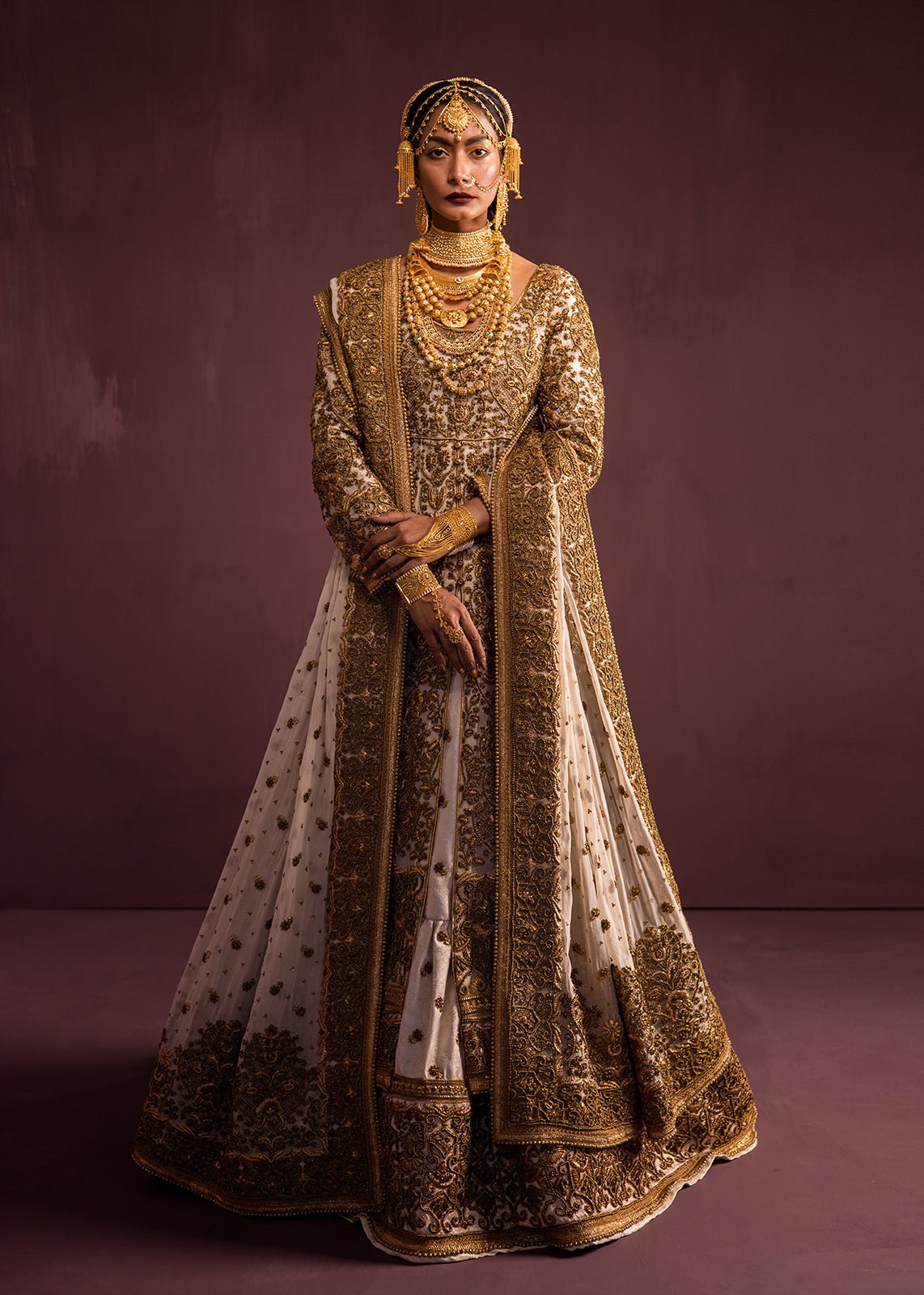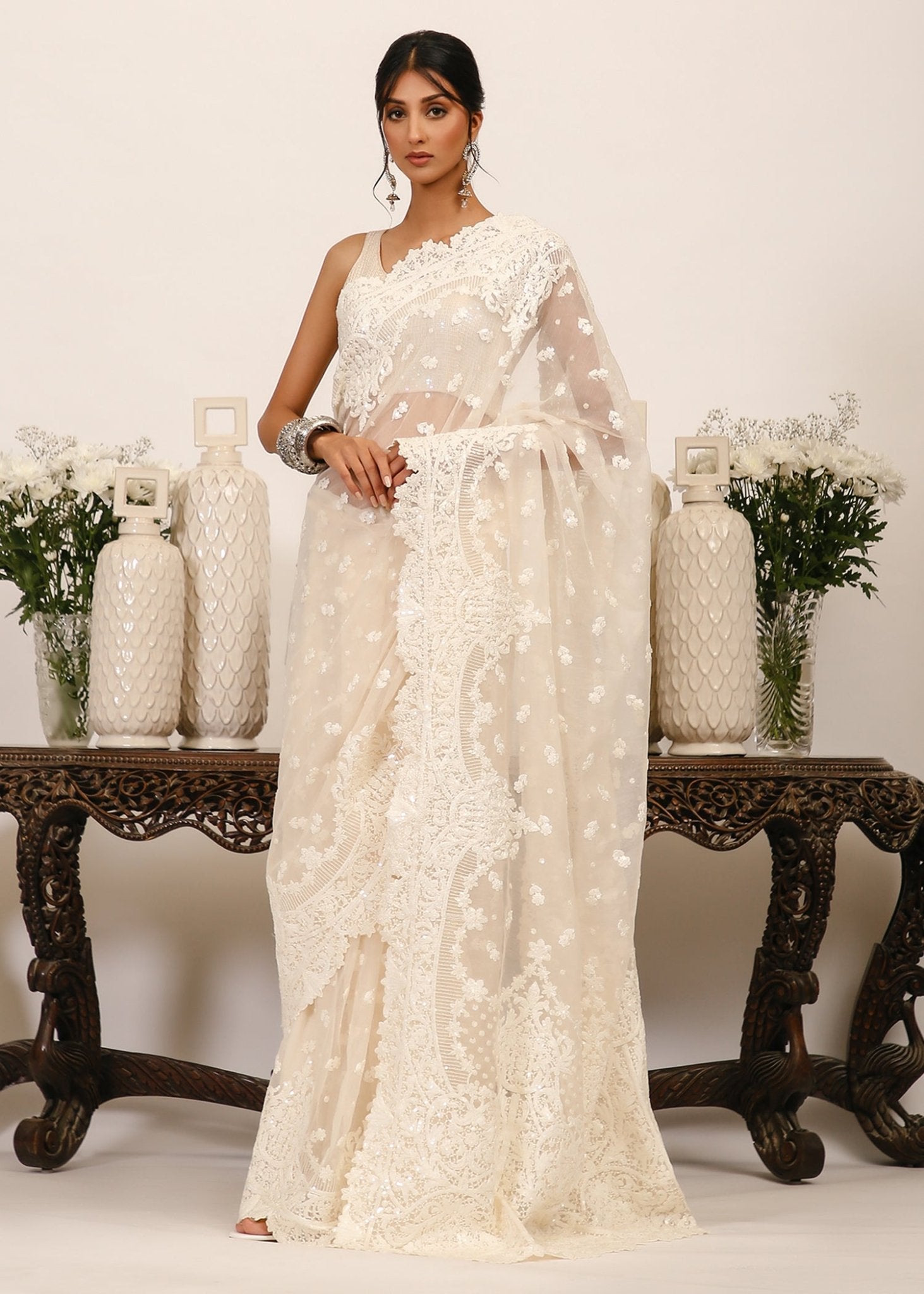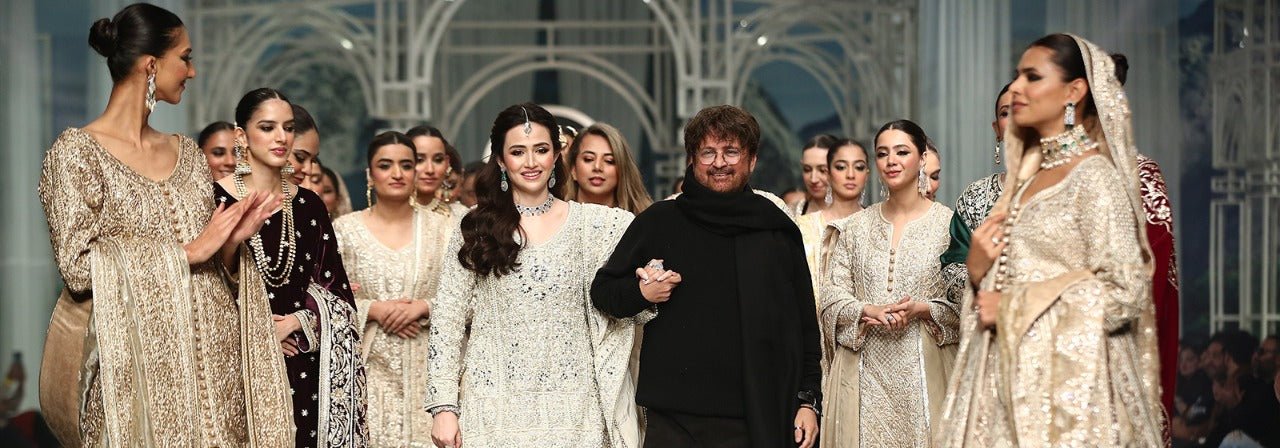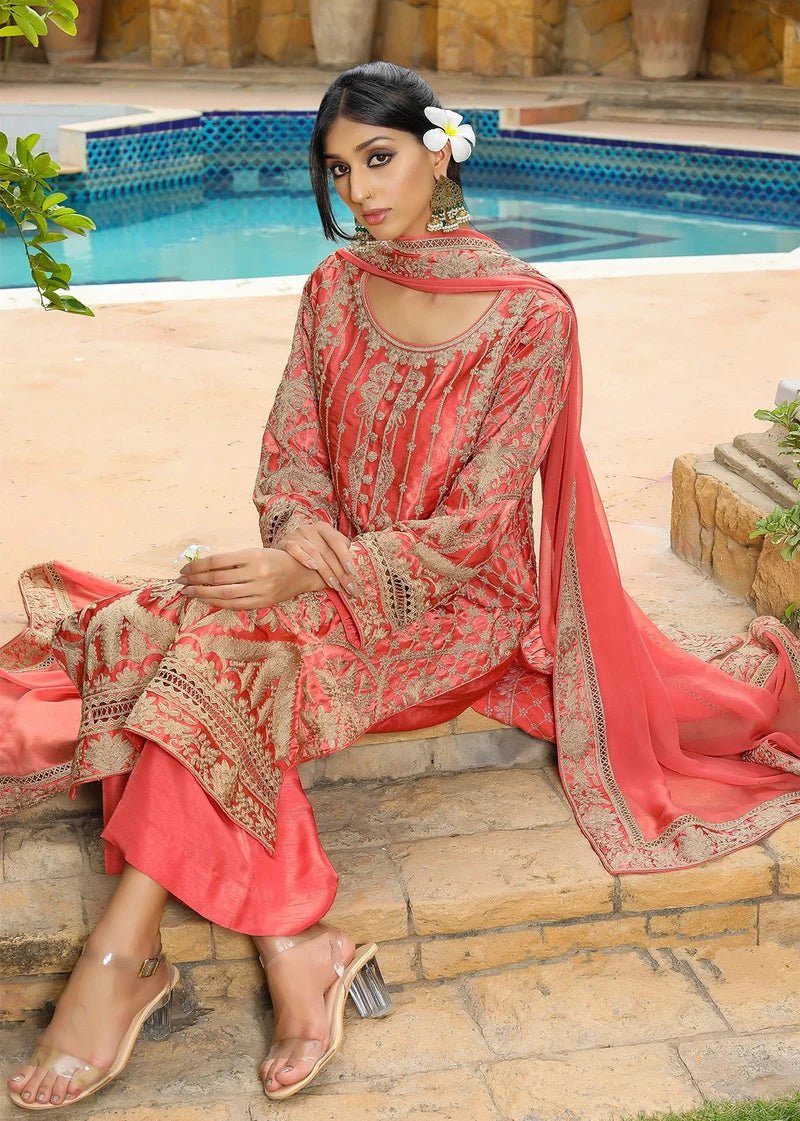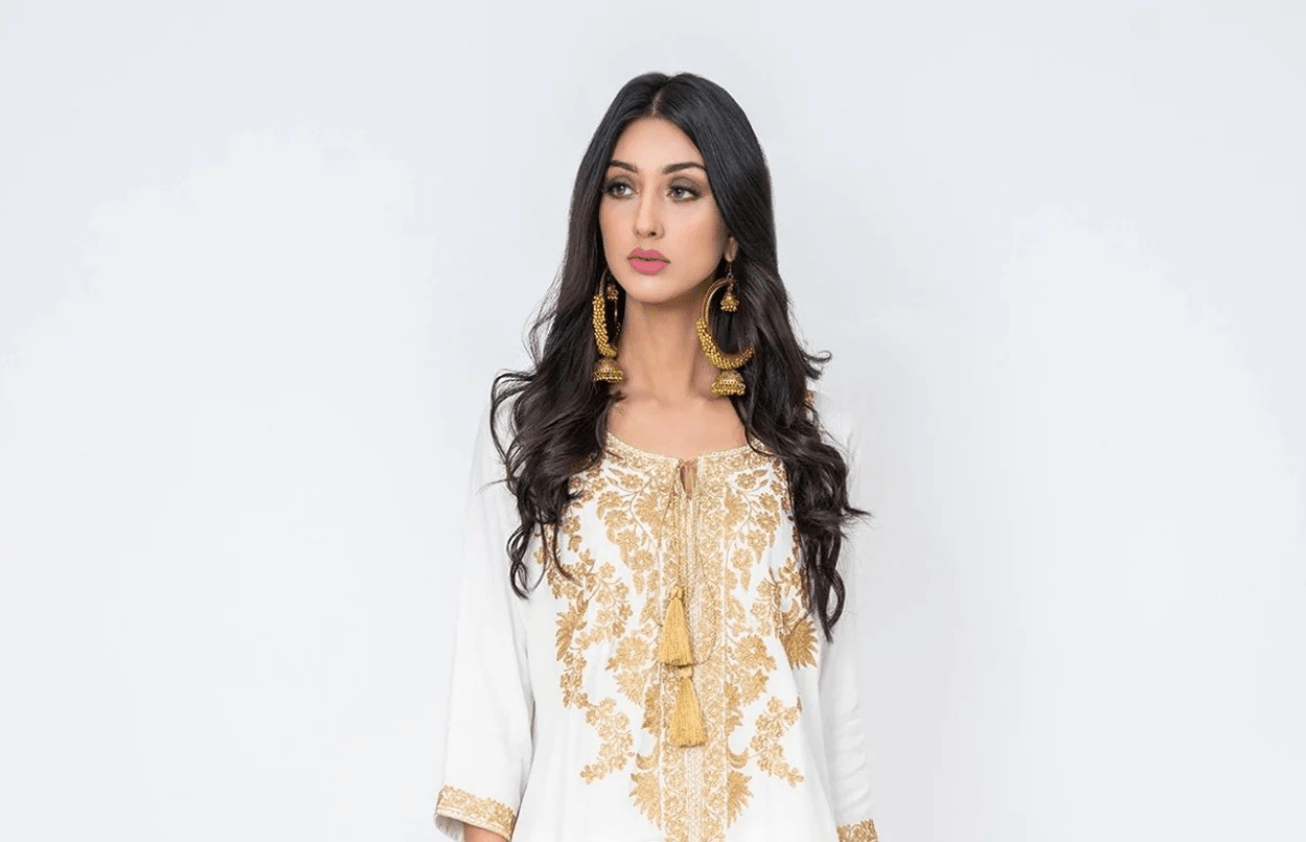
The Allure of Gold Zari Embroidery: History and Modern Appeal
Gold Zari embroidery has long been admired for its intricate beauty and regal appeal. From the courts of ancient rulers to modern-day fashion runways, this luxurious form of needlework continues to capture the imagination of designers, artisans, and fashion enthusiasts alike. In this blog, we will explore the history of gold Zari embroidery, how it has evolved over time, and why it remains relevant in today’s fashion world.
What is Gold Zari Embroidery?

Gold Zari embroidery is a form of embellishment that uses gold threads (or imitation gold) to create intricate designs on fabrics. Zari, a fine thread traditionally made of gold or silver, is used to add texture and shine to garments, making them suitable for formal and festive occasions. The technique typically involves weaving or stitching the gold threads into various patterns, including floral, geometric, and abstract designs.
While authentic Zari was originally made from real gold and silver, modern variations often use synthetic fibers and metals, making the craft more accessible. However, whether it’s real or imitation, the timeless beauty of Zari embroidery lies in its ability to elevate any garment to a new level of sophistication.
A Journey Through Time: The History of Zari Embroidery
The history of Zari embroidery dates back centuries, with its origins deeply rooted in Indian culture. It is believed that Zari work originated during the Mughal era, around the 16th century, when Persian and Indian artisans began weaving gold and silver threads into fabrics. The Mughal emperors, known for their lavish lifestyles, were significant patrons of this craft. Their court garments, including robes and turbans, were often adorned with Zari embroidery, symbolizing their wealth and royal status.
Zari embroidery became an integral part of Indian bridal and ceremonial attire, with regions like Gujarat, Benares (Varanasi), and Surat becoming hubs for its production. Over the years, the craft spread to other parts of the world, including the Middle East and Southeast Asia, gaining global recognition for its opulence and artistic merit.
Modern Appeal: Zari in Contemporary Fashion
Despite its historical roots, Zari embroidery continues to captivate modern designers. Today, Zari work is no longer restricted to traditional Indian wear. It has seamlessly integrated into modern fashion, appearing on evening gowns, jackets, and accessories, appealing to both Eastern and Western audiences.
Here are a few reasons why Zari embroidery has retained its allure in modern fashion:
1. Symbol of Luxury and Elegance
Zari, especially in gold, has always been synonymous with luxury. When incorporated into modern designs, it instantly elevates the garment, giving it an air of sophistication. Whether it’s a gold-embroidered sari, a gown with Zari accents, or a delicate shawl with gold motifs, the embroidery adds a touch of timeless elegance.
2. Versatile Design Element
Zari work is incredibly versatile and adaptable to various fabrics and garments. Designers use it in both subtle and bold ways, creating pieces that range from minimalist elegance to opulent masterpieces. Its versatility allows it to be used on fabrics like silk, velvet, and organza, making it suitable for both traditional and contemporary designs.
3. Fusion of Tradition and Modernity
In today’s globalized fashion world, the fusion of traditional craftsmanship with modern aesthetics is a prevailing trend. Gold Zari embroidery offers the perfect balance between the two. Designers can incorporate this ancient craft into modern silhouettes, creating garments that appeal to the contemporary fashion-conscious consumer while maintaining a connection to cultural heritage.
4. Perfect for Special Occasions
Gold Zari embroidery has long been associated with weddings and grand celebrations. Bridal outfits adorned with intricate Zari work remain a popular choice, symbolizing prosperity and elegance. The embroidery’s ability to shine and catch light makes it perfect for evening wear, making the wearer stand out on any special occasion.
How to Style Gold Zari Embroidered Garments
Given the rich history and modern appeal of Zari embroidery, wearing such a piece can be a statement in itself. Here are a few tips on how to style gold Zari embroidered garments for different occasions:
1. Traditional Indian Wear
For weddings or festive occasions, a heavily Zari-embroidered sari or lehenga is always a stunning choice. Pair it with gold jewelry, and keep the accessories minimal to let the intricate embroidery shine.2. Western Evening Wear
If you prefer a Western look, opt for a gown with gold Zari accents. The embroidery can be subtle, like on the neckline or sleeves, or bold, with Zari embellishments running across the entire dress. Pair it with metallic heels and a clutch to complete the look.
3. Casual Chic
Zari embroidery isn’t just for grand occasions. You can also incorporate it into your everyday wardrobe with a kurta featuring delicate gold Zari motifs or a Zari-accented scarf. Pair these pieces with simple trousers or jeans for a stylish yet understated look.
Caring for Your Zari Embroidered Garments
Zari embroidery, especially when done with real gold or silver, requires special care to ensure its longevity. Here are a few tips to keep your Zari garments in pristine condition:
- Dry Clean Only: Always dry clean Zari embroidered clothing to prevent the delicate threads from tarnishing or breaking.
- Store Properly: Store the garment in a cool, dry place, away from direct sunlight. Use muslin cloth to wrap the garment to protect the embroidery from dust and moisture.
- Handle with Care: Zari work is delicate, so avoid excessive rubbing or folding of the embroidered sections.
Conclusion: A Craft That Transcends Time
The allure of gold Zari embroidery lies in its timeless elegance and rich history. From the royal courts of the Mughal emperors to the runways of today, this intricate craft continues to mesmerize with its beauty and craftsmanship. Whether you choose to wear Zari embroidery for a traditional occasion or as part of a modern ensemble, it remains a symbol of luxury, artistry, and heritage that transcends time.

